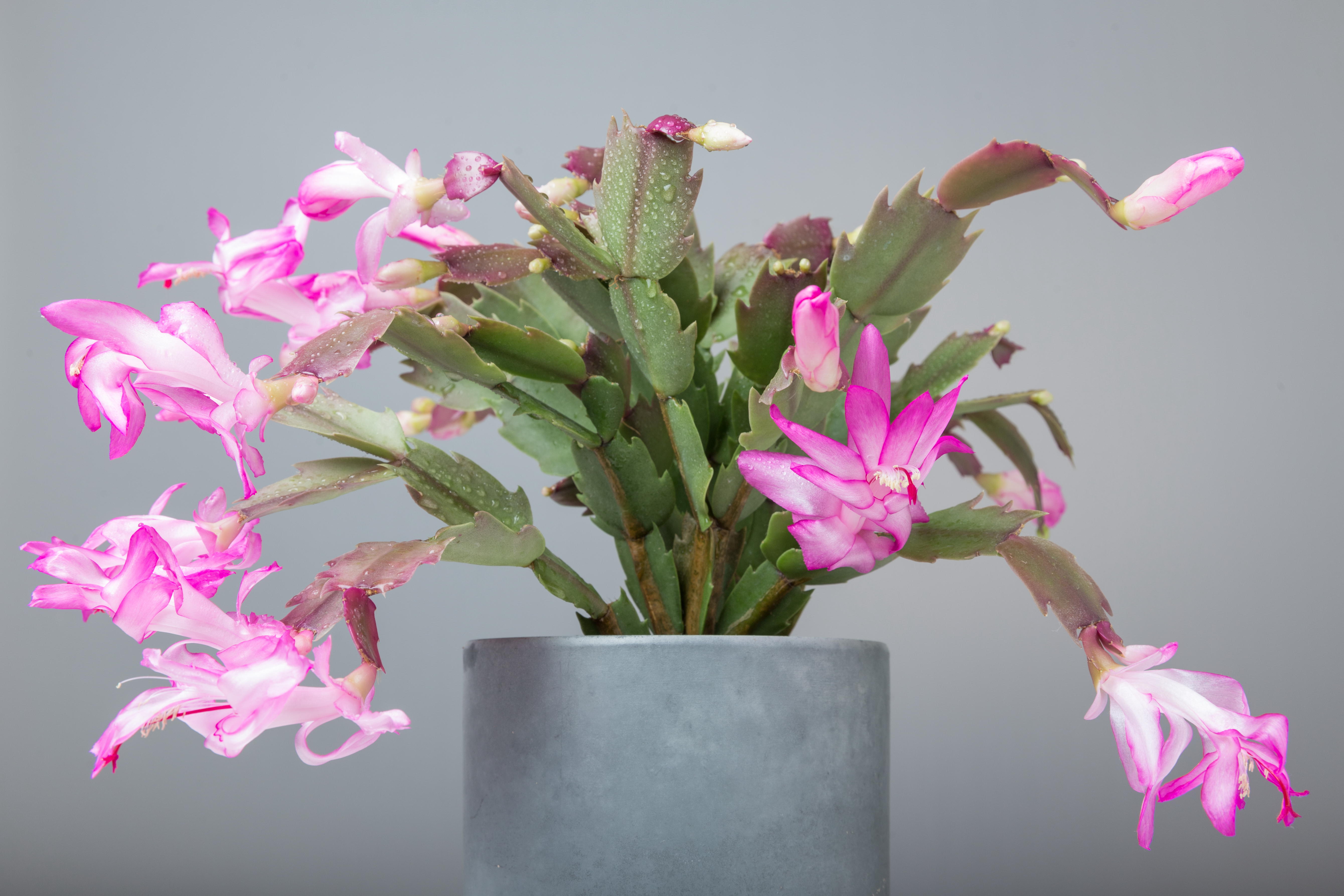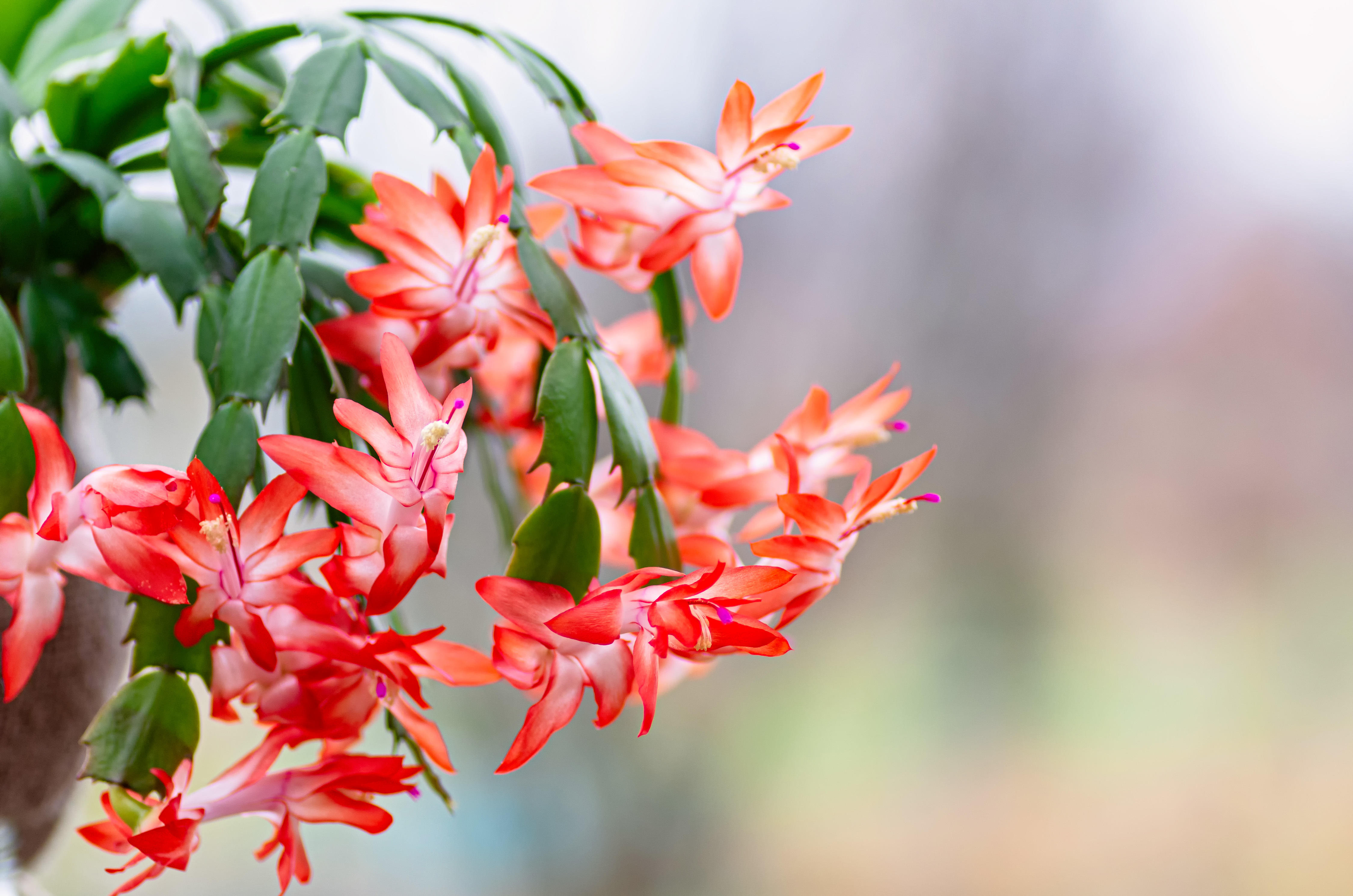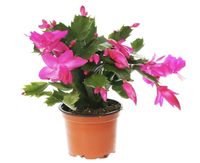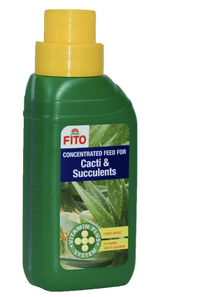How often should I water my Christmas cactus, plus the other rules of Christmas cactus care
Discover expert advice on how to keep your Christmas cactus flowering throughout the holiday season

With drooping stems that burst into bloom like a festive firework display, it’s easy to see why the Christmas cactus is such a popular houseplant. The cactus earns its name by flowering between late November to late January, typically with red petals. However, different varieties come in bright pink, yellow, orange, apricot and white.
“Christmas cacti flower in the bleak of winter, bringing some much needed color and Christmas joy,” says Solene Dequiret, Princess of Wales Conservatory Supervisor at Kew Gardens. “They look great in a hanging basket or drooping down from pots on a shelf, and are quite striking in comparison to your usual houseplants.”
Also known as Schlumbergera, Christmas cacti can live for a very long time, making them one of the easiest houseplants for beginners. “We have seen customers with Schlumbergera specimens that have been passed down to them from their grandparents,” says the PlantSOS Team at Conservatory Archives. “They are very mature plants and when the flowering season comes around the plant is entirely covered! But even young plants can put on a flamboyant display.”
To get this plant to flower in all its glory, you’ll need to give it the right kind of care. So what are the rules — and watch outs — of Christmas cactus care?
Christmas cactus plant in a 1 liter pot, Amazon
If you weren't lucky enough to be passed a Chritsmas cactus by your grandparents, they are easy and affordable to buy.
How often should I water my Christmas cactus?
“The key is to let it dry out so that it swings from wet to almost dry,” says Ian Brown, lead botanist at PlantHero,proving there is no one rule when it comes to how often to water houseplants. “This might be once every week to once every other week, depending on how big the plant is relative to the size of soil. You don't want to keep it constantly wet. As long as your Christmas cactus is quickly draining, quickly drying and watered frequently, it’ll be pretty happy. The ideal environment is a terracotta pot, which dries fairly quickly.”
How much you should water this plant also depends on the time of year. “Water during growth (summer) and flowering (winter), but water less during rest periods (spring and fall),” says Kew Gardens' Solene Dequiret.
Unlike most cacti, which are arid succulents and suited to very dry conditions, the Chritsmas cactus is tropical, native to rainforests in Southeast Brazil. This is why the Christmas cacti is a little more thirsty than its prickly relatives.
This plant is also what’s known as an epiphyte, which is the scientific word for a plant that grows on another plant. “In the rainforest, you see Christmas cacti growing up in the branches of the host trees,” says PlantHero’s Ian Brown. “All cacti evolved from epiphytes, which is why the Christmas cactus is representative of the ancestor of all cacti.”
What are the other rules of Christmas cactus care?

1. Provide bright, indirect light
In the rainforest, Christmas cacti get lots of bright, indirect light filtered through the trees. This means that they can be prone to sunburn if they get too many direct rays. “Be careful not to position the plant in a too hot and sunny a position,” says Solene Dequiret from Kew Gardens.
Lindsay Pangborn, a gardening expert at Bloomscape, explains the perfect position for this plant: “Close placement to an east-facing window, or a few feet back from a south- or west-facing window is ideal. While they may tolerate low light for a short period, they won’t thrive and won’t produce new flower buds."
2. Allow your Christmas cactus to rest during spring and fall
You’ll need to move your Christmas cactus and adjust its watering schedule at certain times of year. “An annual dormancy period is critical to encourage this plant to rebloom each year,” says Lindsay Pangborn at Bloomscape. “Once flowering has finished in the winter, place your plant in a cool, dim area that stays around 55°F, like a basement. Water very infrequently during the rest period, because your plant will not be actively growing and using the water very quickly, making it susceptible to root rot."
When spring arrives, it's time to "wake" your plant back up again, explains Lindsay Pangborn: "Move it back to a warm, bright area of your home, give it a good soak, and you’ll notice it slowly perk back up over the next few weeks. You can then care for it as you normally would.”
3. Use a fertiliser containing phosphorus
Make sure you give your plant cactus-specific food. “A common mistake we see is people giving their Christmas cacti Miracle Gro fertiliser, which is really high in nitrogen, a nutrient that cacti don’t need,” says PlantHero’s Ian Brown. “Cacti need phosphorus, so it's a good idea to stick with a cactus fertiliser. With the right nutrition, your Christmas cactus will bloom fully. Phosphorus is also key to preventing root rot”.
Among all the different cacti fertilizers, this is the best bang for your buck, the best value when compared to how good it is for your plants
What should you watch out for when caring for your Christmas cactus?
1. Mealybugs
The Christmas cactus is prone to one particular type of pest: mealybugs. “It’s one of the most common problems we see with the Christmas cactus,” says the PlantSOS Team at Conservatory Archives. “Often mealybugs like to hide in the crevices between each leaf or around the base of the developing flower bud. Check the plant regularly and treat any concealed mealybugs either by gently removing them with a cotton bud dipped in rubbing alcohol, or by spraying a non-chemical indoor pest spray.”
Mealybugs will just look like little white dots. Neem oil is the perfect way to get rid of them, diluted in water and reguarly sprayed.
It may not come in the fanciest bottle but this no frills neem oil does exactly what you want it to. Mix in a spray bottle with water and apply to your Christmas cactus to get rid of mealybugs.
Heating and air vents
“Be sure to keep your Christmas cactus away from heating or cooling vents or units,” says Bloomscape’s Lindsay Pangborn. “They do not do well in environments where temperatures can shift abruptly. Christmas cacti also love a humid setting, making it beneficial to group them with other plants or use a pebble tray.”
Artificial light
If your Christmas cactus isn’t flowering in winter, it could be a result of too much artificial light. “If you have a light on in your house all the time, it's not going to know that it's wintertime and it's not going to flower,” says PlantHero’s Ian Brown.
Be The First To Know
The Livingetc newsletters are your inside source for what’s shaping interiors now - and what’s next. Discover trend forecasts, smart style ideas, and curated shopping inspiration that brings design to life. Subscribe today and stay ahead of the curve.
Kate Hollowood is a freelance journalist who writes about a range of topics for Marie Claire UK, from current affairs to features on health, careers and relationships. She is a regular contributor to Livingetc, specializing in reporting on American designers and global interiors trends. Based in London, Kate has also written for titles like the i paper, Refinery29, Cosmopolitan and It’s Nice That.
-
 The 'New British' Style? This Victorian London Home Embraces Its Owners' Global Background
The 'New British' Style? This Victorian London Home Embraces Its Owners' Global BackgroundWarm timber details, confident color pops, and an uninterrupted connection to the garden are the hallmarks of this relaxed yet design-forward family home
By Emma J Page
-
 Muji Living Room Ideas — 5 Ways to Harness The Calming Qualities of This Japanese Design Style
Muji Living Room Ideas — 5 Ways to Harness The Calming Qualities of This Japanese Design StyleInspired by Japanese "zen" principles, Muji living rooms are all about cultivating a calming, tranquil space that nourishes the soul
By Lilith Hudson


